The QCD table provides a detailed view of the values entered for the indicators. It links to the indicators of a letter and displays the content present in each of its boxes by showing:
indicators in rows,
boxes in columns,
values entered for each indicator in cells,
value color code according to rules defined in indicators as well as the color-coding.
This article explains how to access and use the QCD table to optimize your analyses and action plans.
Accessing the QCD Table
This tool is present by defaut in your board’s dock, as are the other QCD elements.
Using the QCD Table
To use the QCD table:
Drag and drop it onto the board.
Start configuring it:
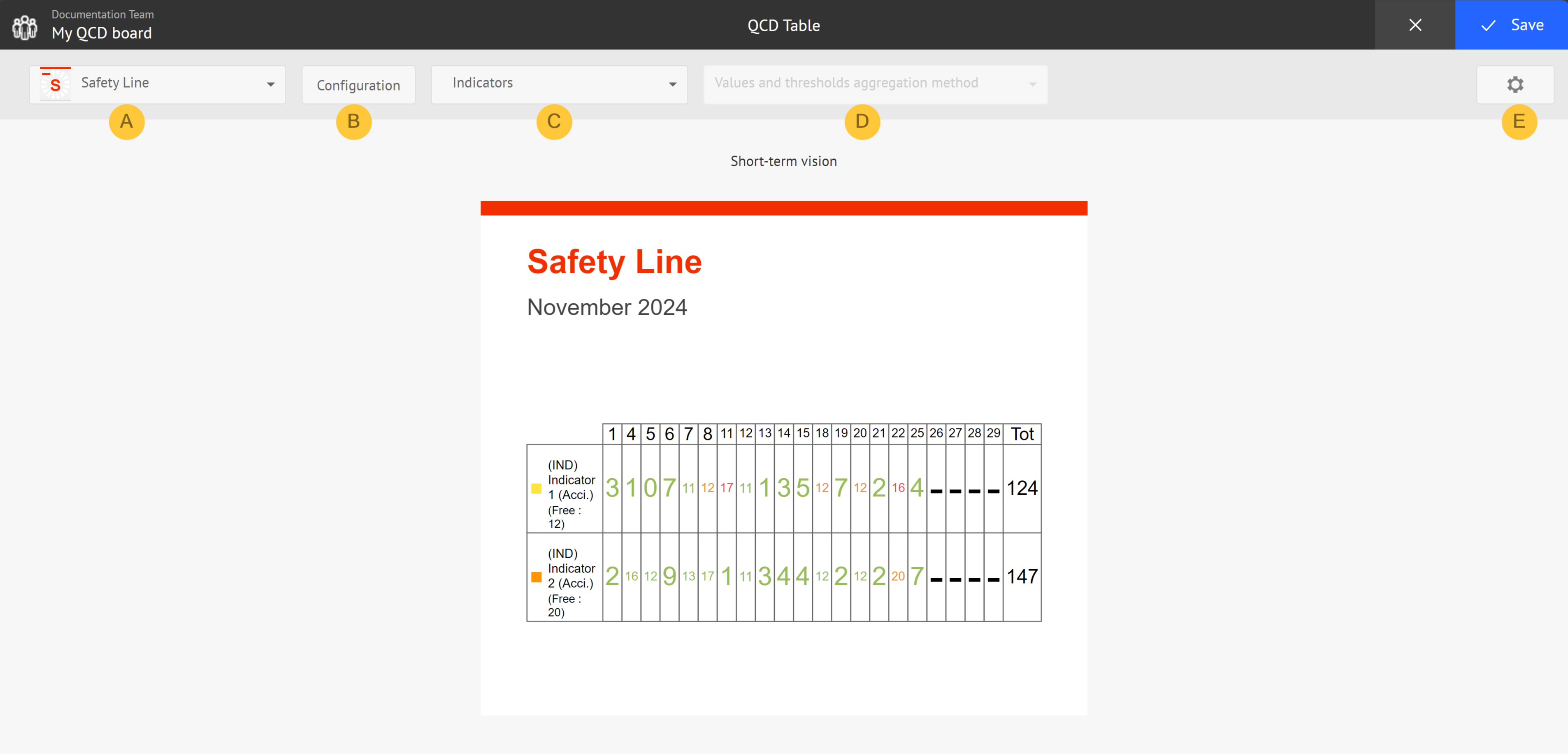
Select the letter for which you want to generate a table.
From the Configuration button, you can:
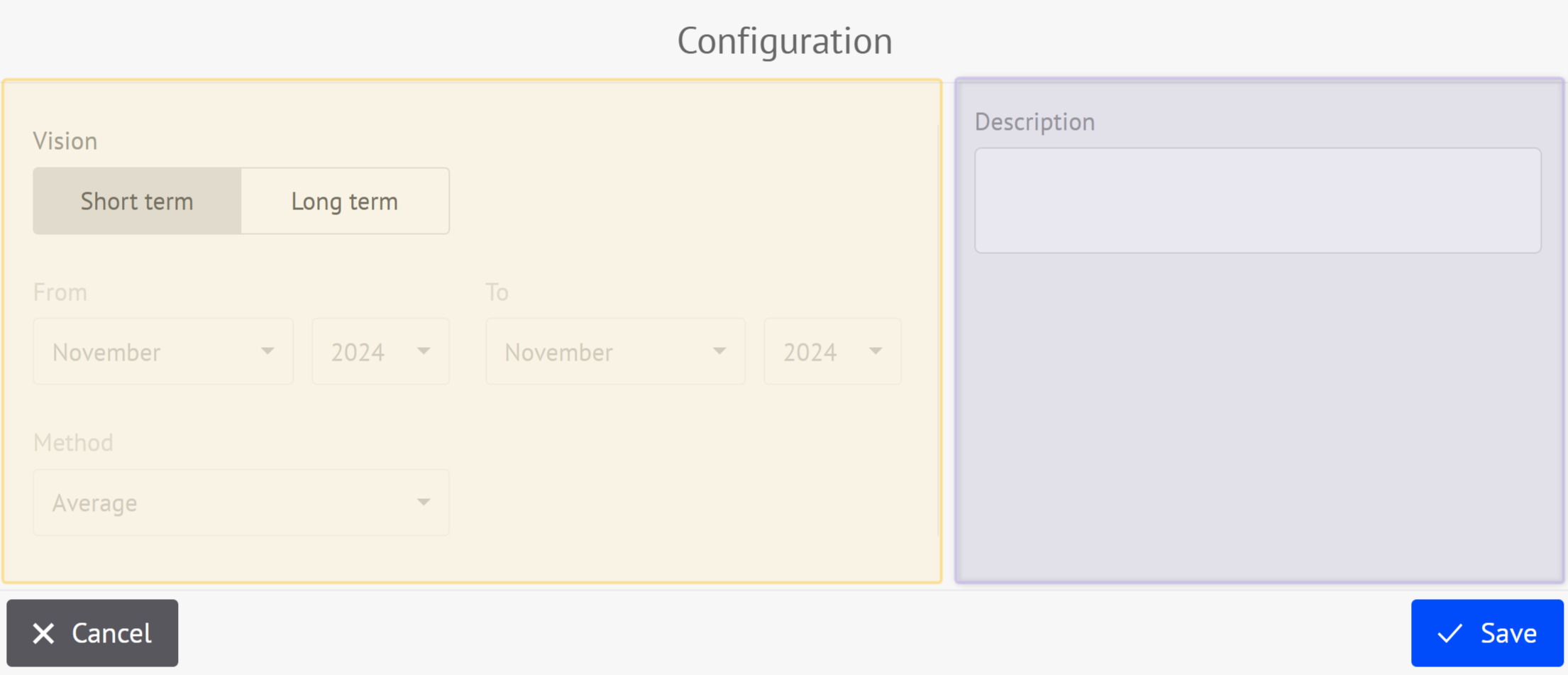
select the data visualization type:
Short-term data visualization
If you select this data visualization type, the values of the current time window are used.
Long-term data visualization
If you select this data visualization type, the values are taken from a series of time windows (from…to…)
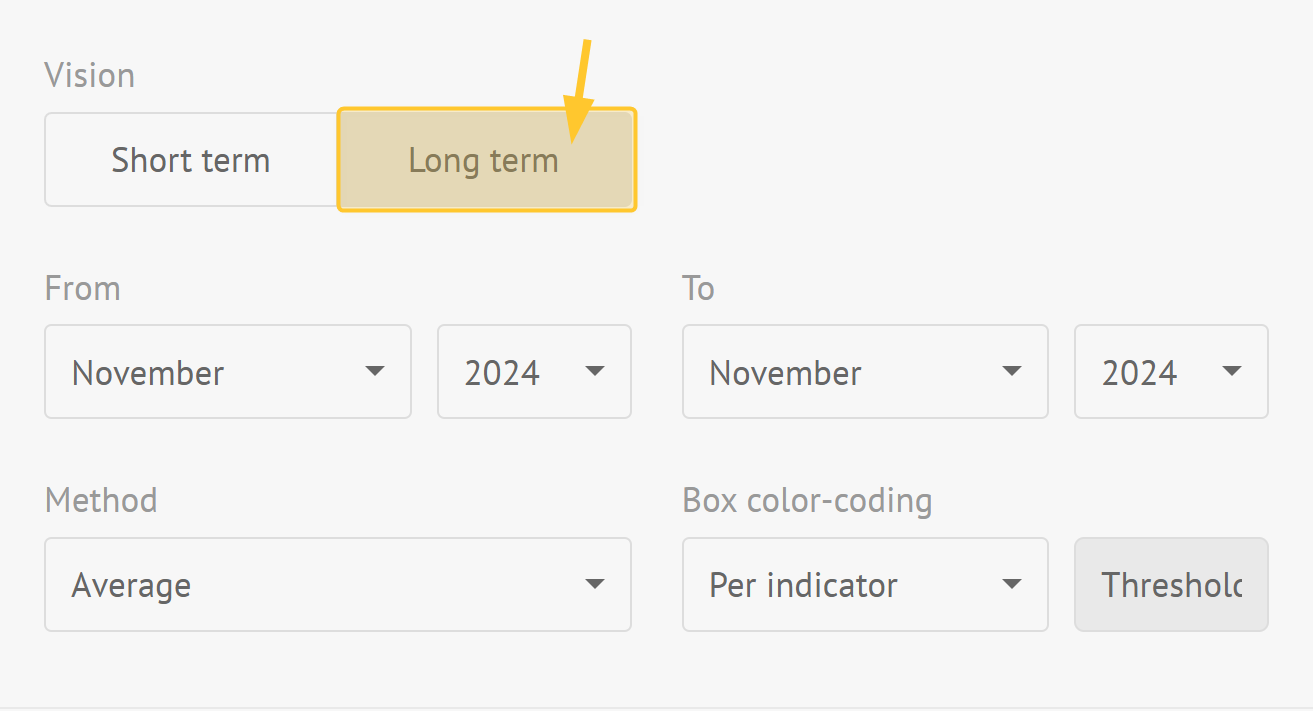
You can define:
beginning and end of long-term time windows:
Note:
The selectors depend on the time window of the board.
indicator type of consolidation: sum or average or minimum or maximum
box color-coding (threshold visualization): per indicator or global
Note:
Long-term shows values from the letter historical data by aggregating them according to the selected option.
enter a desription that is displayed at the top right of the item.
Click Save to proceed to the next step.
Select the indicators to display.
Note:
If you select several rings that contain the same indicators, they are displayed several times in the list with the same name.
You can aggregate the values of these indicators into a single row. In this case, the value color-coding is displayed only if the status across the rings is the same. See the next step for more details.
Manage the display of these indicators in different ways via the aggregation method:
“None” option displays a series of data (values and thresholds) by ring. Values from the first ring keep their original indicator colors. Values from other rings are given a color derived from their indicator's original color.
“Sum”, “Average”, “Min” and “Max” value aggregation options display only one series of data per indicator, with a dot for the corresponding threshold.
Define table layout.
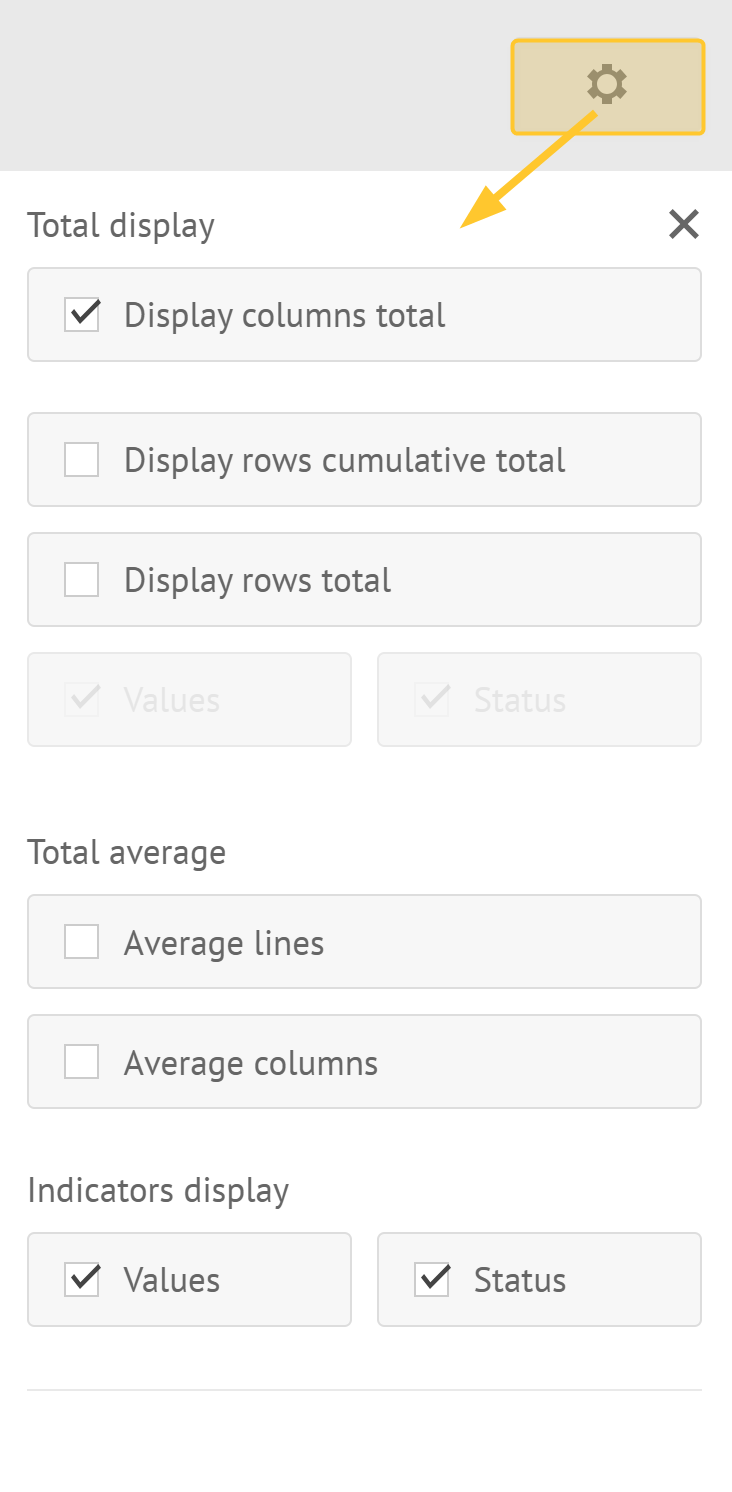
The Settings button allows to define:
whether or not to display totals:
total of the columns
cumulative total of the lines,
total of the lines.
whether or not to display the total average
average of the columns
average of the lines
whether or not to display values or status
Note:
If you select:
Values + Status: Values are displayed in color.
Only Values: only the values are displayed.
Only Status: only colored dots are displayed.
If you select only Status and the cell does not contain a value, a black dot is displayed.
Example:
Visual appearence in short-term mode:
Consider the following settings:
3 rings,
22 common indicators for the first 2 rings:
indicator 1 with a threshold of 1
indicator 2 with a threshold of 2
If you decide to display:
values and status:
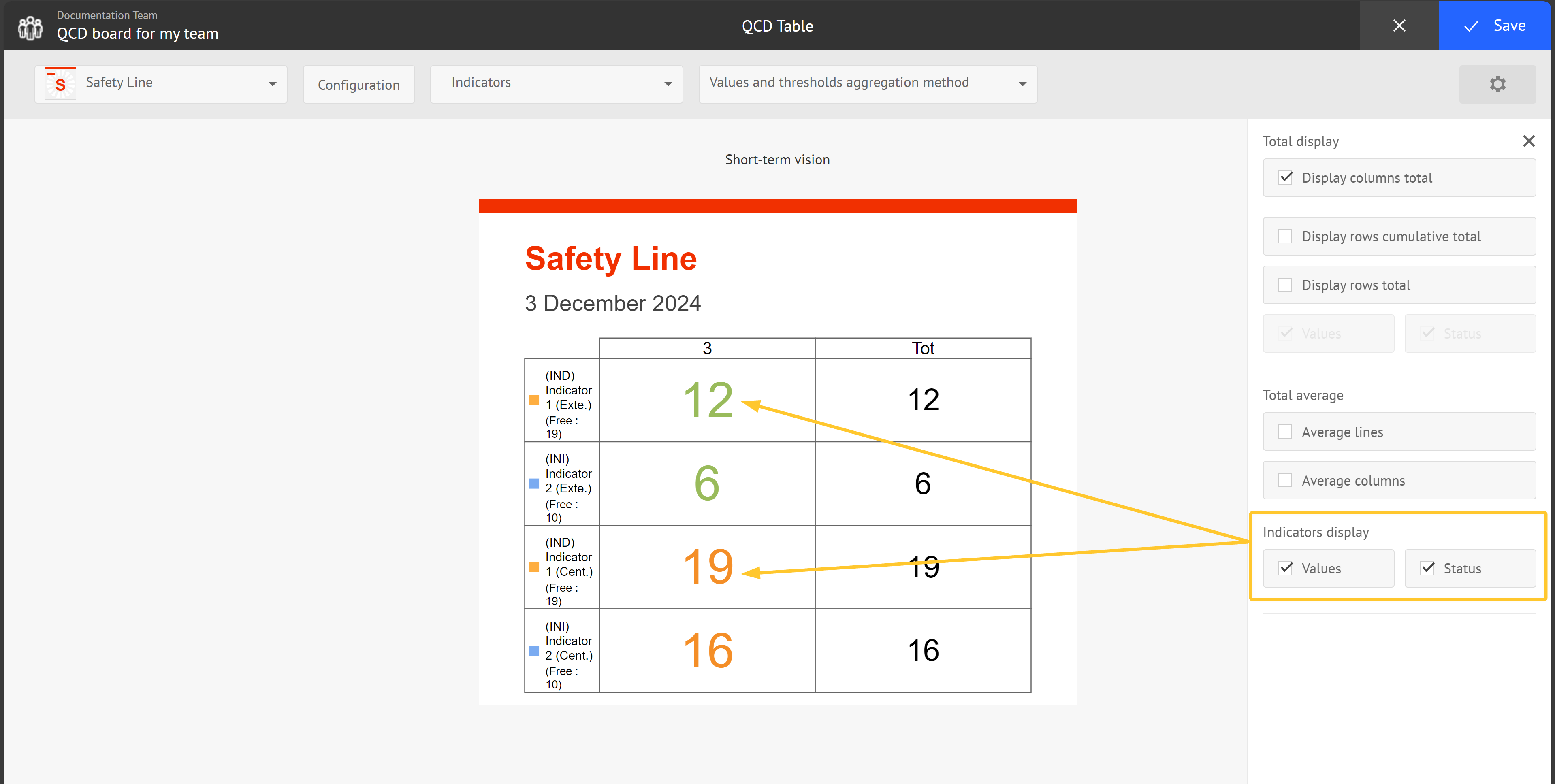
only status:
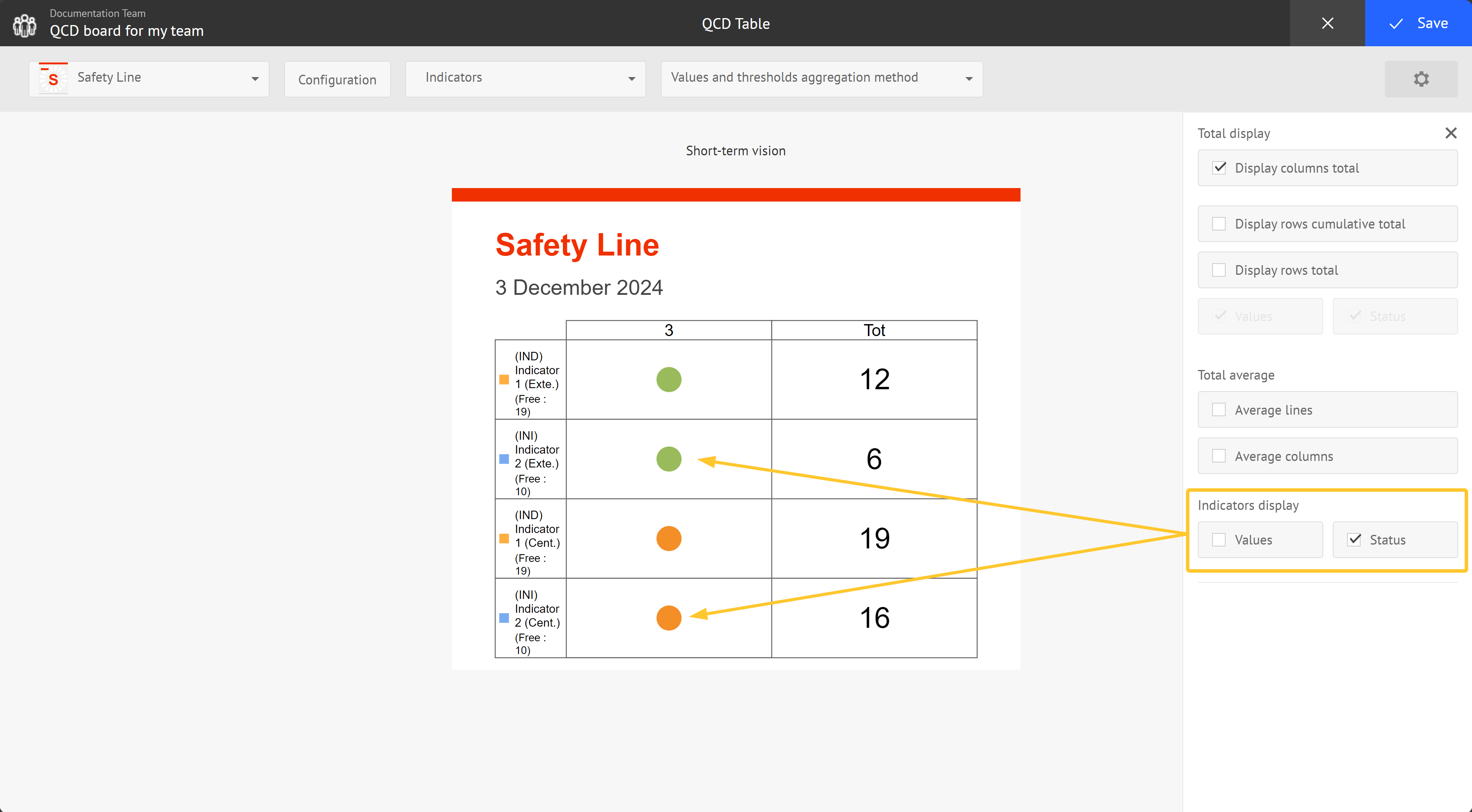
only values:
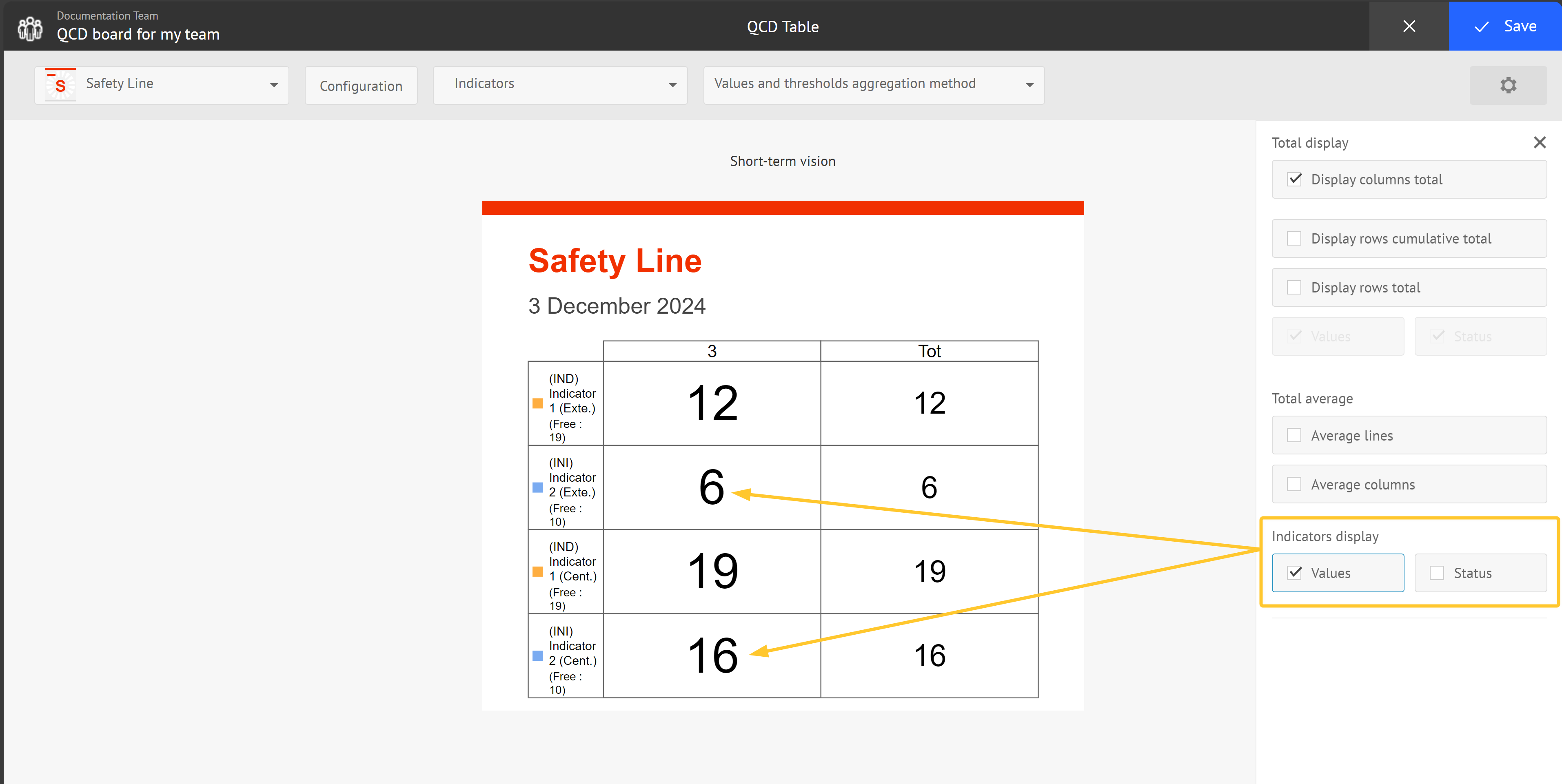
values and statut on the total line:
manual color-coding for example :
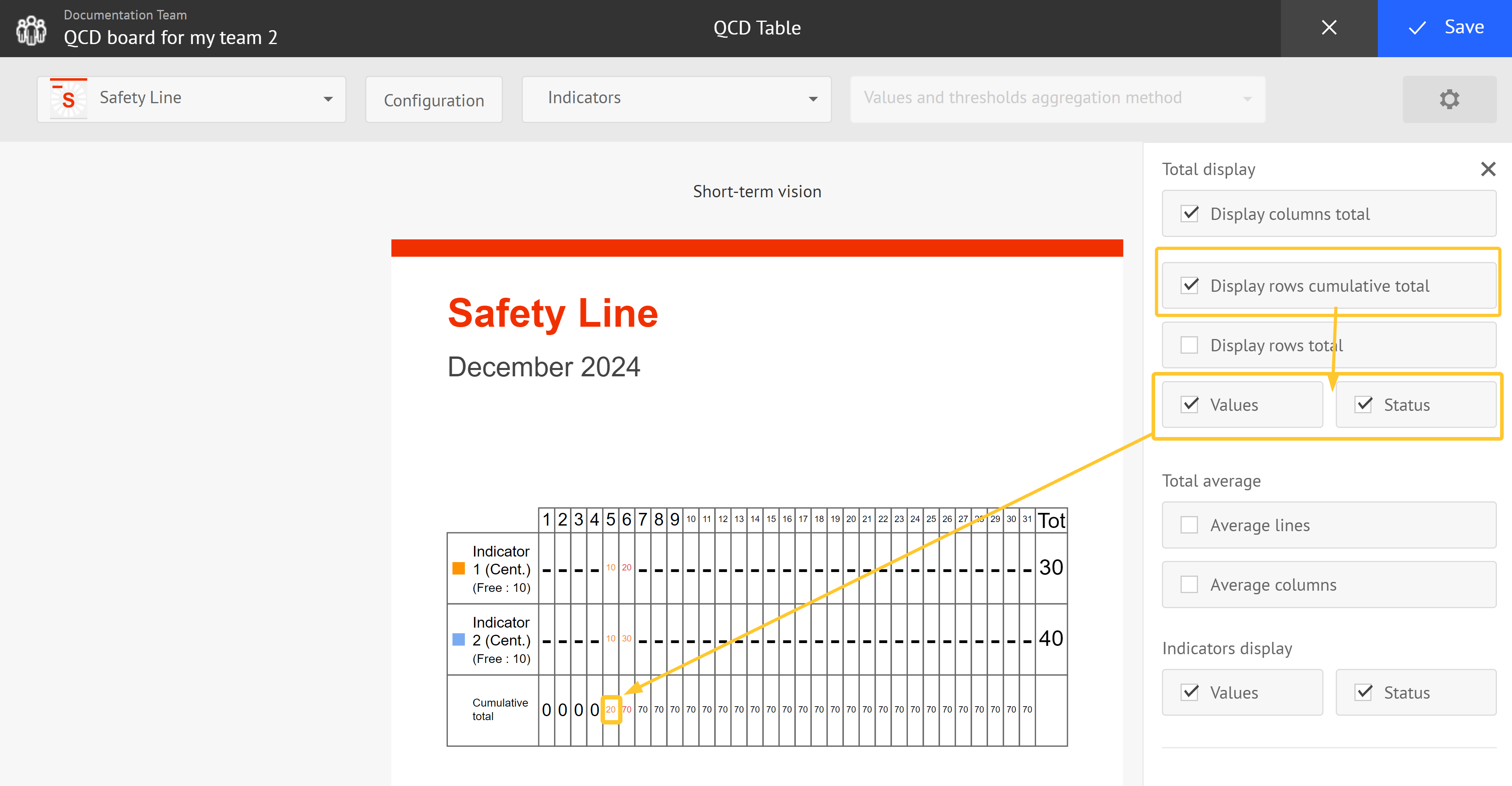
Indicators follow their color code rules
Total colored according to the choice defined manually on the box
Visual appearence in long-term mode:
Note:
In a long-term mode, thresholds of single indicators are not displayed. This is because for a single indicator, the threshold can change over time, from one (short term) time window to another.
However, in a long term mode, changing thresholds of single indicators can be aggregated.
Example: indicator A has a threshold of 10 in January (short term time window) and 20 in February (short term time window). Indicator B has a threshold of 8 in January and 30 in february. In a long term mode, if you choose average as an aggregation option, the threshold are of 9 in January and 25 in February. In a given time window, thresholds are aggregated as many times as the number of cells with a value.
See annotation B for step 2 of this procedure.
Click Save.
Your QCD table is ready to be used.
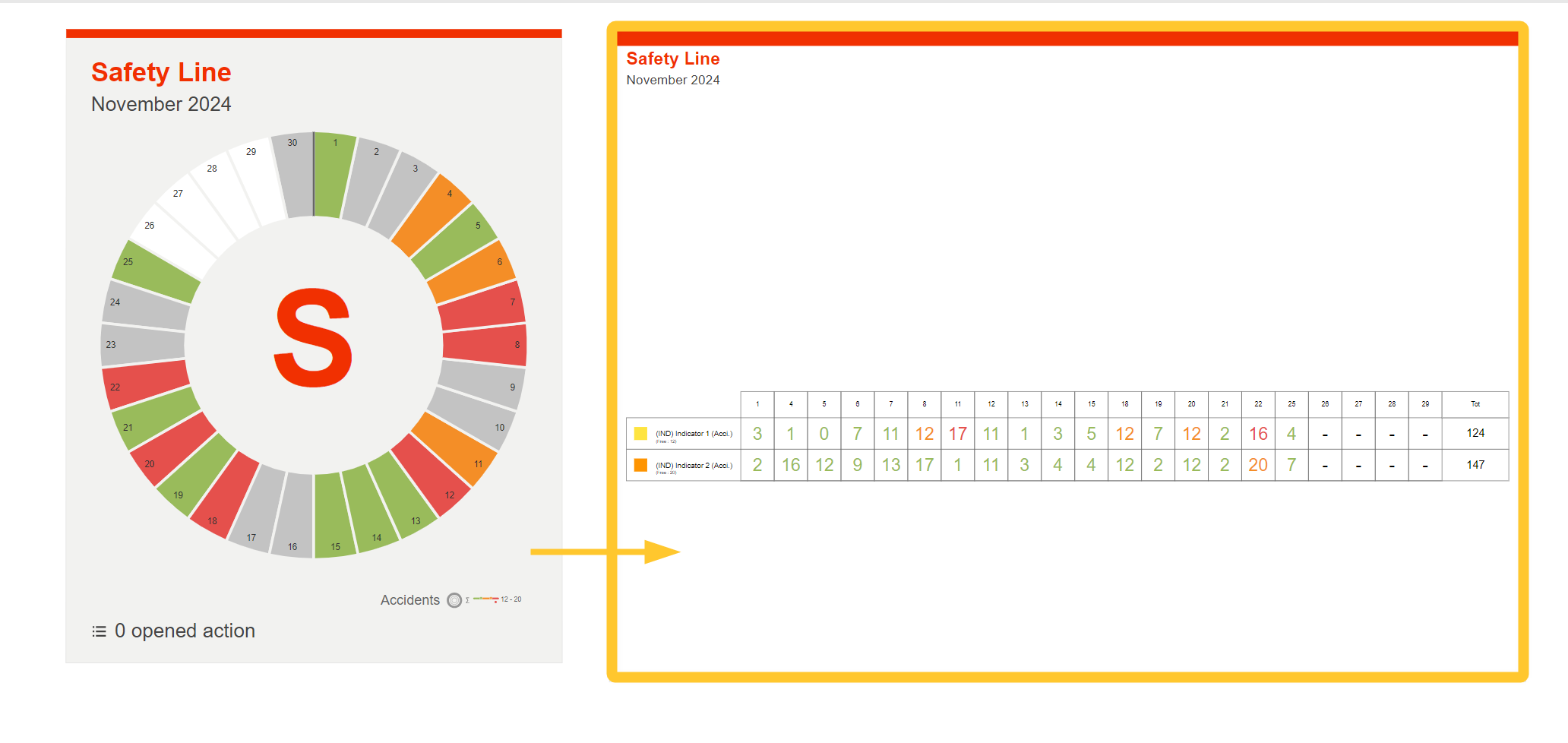
Note:
When you modify the letter, the information is automatically updated in the chart.
One of the advantages of the table tool is the use of box color codings defined in indicators regardless of the valuation type of the ring they belong to: even if it is represented in a “deactivated” way, its formula can be used by the table tool.
Warning:
You cannot generate a table with indicators belonging to concentric rings with:
different number of boxes (different ritual frequencies or different numbers of boxes in a custom cut-out).
different labels (in case of a custom cut-out).